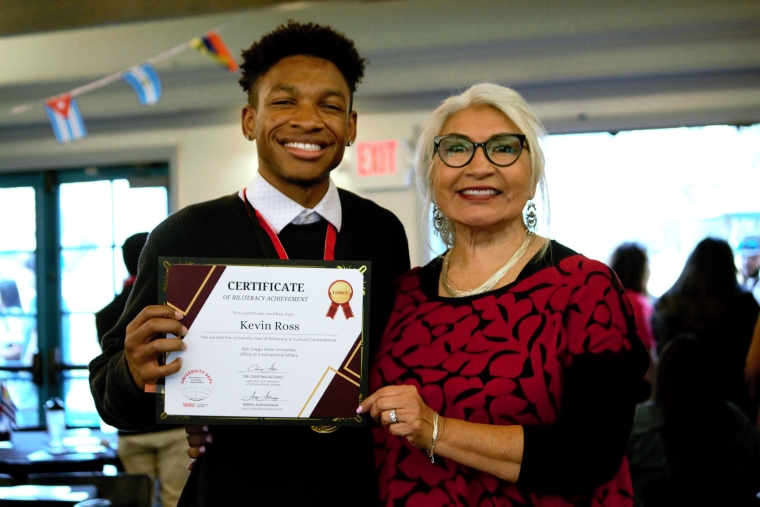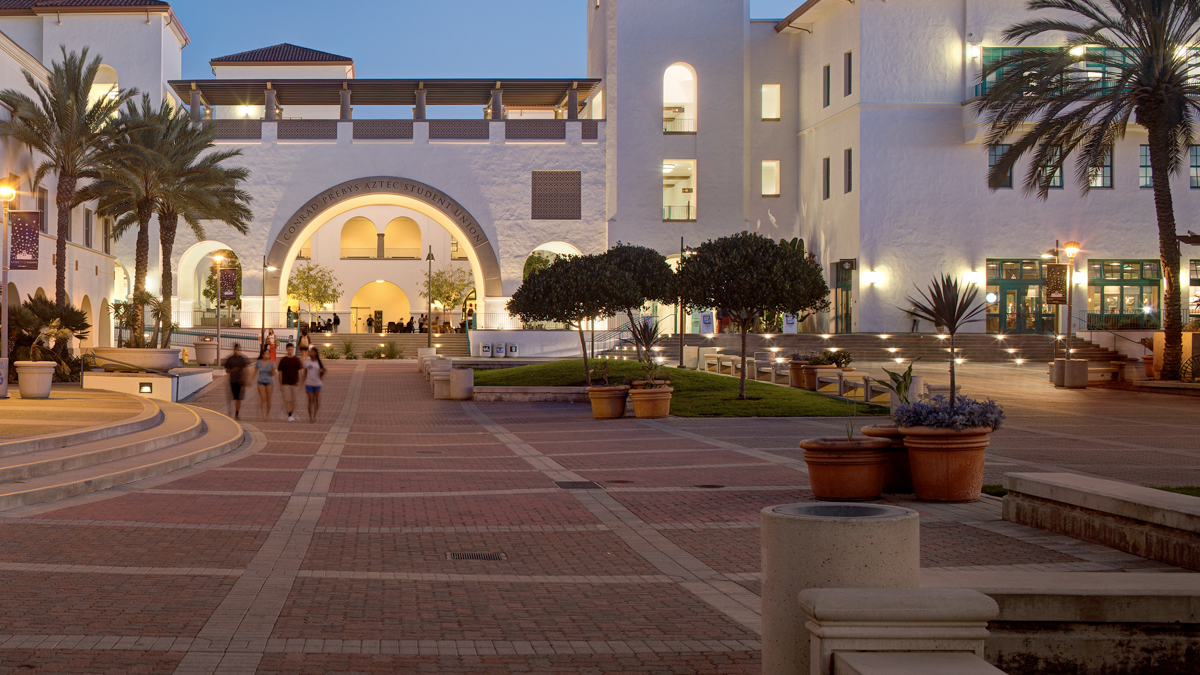Illuminating languages: SDSU spotlights multilingualism as a global advantage
Ceremony recognizes recipients of the innovative University Seal of Biliteracy and Cultural Competence, a digital badge which certifies working fluency across 50 languages

Kevin Ross has a knack for languages. Growing up in Los Angeles, he learned Spanish while working in restaurants and hanging out with friends, many of whom spoke little to no English.
He mastered Portuguese before traveling to Brazil, charming locals into treating him like their new neighbor. Along the way, he also began speaking French.
But Ross, a San Diego State University International Business major, lacked formal proof of his multilingual fluency. Until now.
Earlier this month, he joined dozens of SDSU students, faculty, staff and alumni in earning the University Seal of Biliteracy and Cultural Competence (USBCC.) This certificate and digital badge documents that recipients have demonstrated working fluency in reading, writing, listening and speaking a second and in some cases a third language.
Ross received his University Seal for Spanish. Upon graduation from SDSU, he is considering joining the Peace Corps before eventually pursuing a career as a diplomat.
“I speak a lot of languages, but I don’t have any certification,” said Ross. “So I feel like this is the first certification that I can get, and I want to certify myself in other languages as well.”
SDSU launched the USBCC program in 2021. It’s the brainchild of Cristina Alfaro, Associate Vice President of International Affairs and a long-time thought leader in multilingual education.
The mission is to spotlight the value of speaking more than one language in today’s global job market.
“I really want to send a message that bilingualism and multilingualism is a global advantage,” said Alfaro at the ceremony. “All of you here must be proud of yourselves.”
While other countries have embraced multilingualism, the United States has been slow to embrace language learning beyond English, said Alfaro. “So what we are doing here today is real progress toward language understanding and cultural understanding.”
The first year of the program, only three students took the exam and earned certification, all for Spanish. This academic year, 100 participants have successfully passed the exam in languages including Spanish, Arabic, Japanese, Portuguese, German, French and Vietnamese, said Arwa Alkhawaja, USBCC program coordinator.
In all, more than 250 participants have earned the USBCC since the program’s inception, said Alkhawaja. Today, the USBCC is available in 50 languages.
 Open the image full screen.
Open the image full screen.Emily Jullié, a lecturer in SDSU’s Department of Dual Language and English Learner Education, took her first Spanish class 34 years ago, and it set her on a trajectory to live and teach in Latin America.
“Survival skills are one of the best ways to learn a language,” she said. “I know I can do difficult things in another language. I can manage visas, get work, find a place to stay, go to the doctor, open a bank account, all the things that we take for granted in our own language.”
Jullié said she is thankful that the USBCC enables bilingual and multilingual people to certify their language skills. “We are going to show the world that being bilingual is a huge accomplishment and something to be celebrated,” she said.
While fluency is critical, the USBCC also contains a cultural component. It may involve participating in study abroad or one of the many SDSU transborder programs in Mexico. Or it could be met by joining campus research, events, or projects that include cultural experiences.
This year’s USBCC recipients span a variety of majors, including education, business and engineering. Fernanda Gaspar, a recent SDSU business administration graduate with a minor in jewelry making and metal work, appreciated the university’s recognition of the value in being bilingual.
“I have little siblings growing up learning both languages, and it is really inspiring to know we are all here together celebrating this,” she said.

